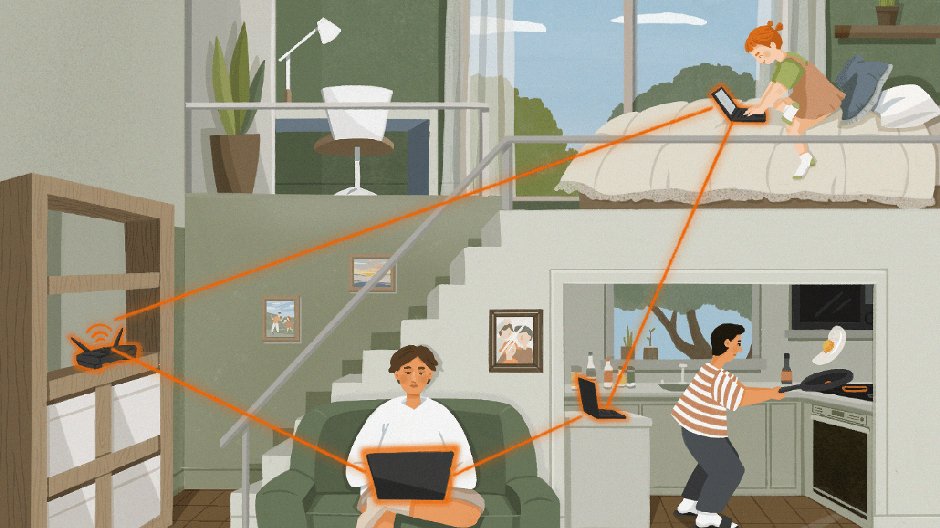In today’s digital age, a strong and reliable WiFi connection is not just a luxury but a necessity. Whether you’re working from home, streaming your favorite shows, or connecting with loved ones, a stable internet connection is essential for modern living. However, many homes struggle with dead zones, dropped signals, and slow speeds due to outdated WiFi infrastructure. Fortunately, there are ways to strategically upgrade your home’s WiFi to ensure seamless connectivity and enhance your overall living experience.
Assess Your Current Setup
Before diving into any upgrades, it’s crucial to assess your current WiFi setup. Take note of dead zones where the signal is weak or nonexistent, as well as areas where you experience slow speeds. Additionally, consider the number of devices connected to your network simultaneously and the types of activities they’re engaged in (e.g., streaming, gaming, browsing). This assessment will help you identify the areas that need improvement and guide your upgrade decisions.
Invest in a High-Quality Router
The foundation of any robust WiFi network is a high-quality router. If you’re still using the router provided by your internet service provider (ISP), it may be time for an upgrade. Look for routers that offer advanced features such as dual-band or tri-band connectivity, beamforming technology, and support for the latest WiFi standards (e.g., 802.11ac or 802.11ax). These features can significantly improve signal strength, range, and overall performance. Fiber internet providers in Los Angeles California offer ultra-fast and reliable connectivity, making them an excellent choice for upgrading your home’s WiFi infrastructure and enhancing your online experience.
Consider Mesh WiFi Systems
For larger homes or spaces with multiple floors, traditional routers may struggle to provide adequate coverage. In such cases, a mesh WiFi system can be a game-changer. Mesh systems consist of multiple nodes that work together to create a single, seamless network. They intelligently distribute the WiFi signal across your home, eliminating dead zones and ensuring consistent connectivity throughout. While mesh systems may come at a higher price point than standalone routers, the investment is often well worth it for the improved coverage and performance they provide.
Optimize Placement
The placement of your router or mesh nodes plays a significant role in the overall performance of your WiFi network. Ideally, the router should be placed in a central location within your home, away from obstructions such as walls, furniture, and appliances. If you’re using a mesh system, strategically position the nodes to ensure optimal coverage across all areas. Experiment with different placements to find the configuration that works best for your home layout and connectivity needs.
Upgrade Your Internet Plan
No matter how advanced your WiFi infrastructure is, it can only perform as well as your internet connection allows. If you consistently experience slow speeds or connectivity issues, consider upgrading your internet plan with your ISP. Look for plans that offer higher download and upload speeds, as well as reliable performance during peak usage hours. A faster internet connection will complement your upgraded WiFi infrastructure and provide a smoother online experience for all your devices.
Secure Your Network
In addition to enhancing performance, it’s essential to prioritize the security of your WiFi network. Unsecured networks are vulnerable to hacking, unauthorized access, and other cyber threats. Take steps to secure your network by enabling WPA2 or WPA3 encryption, changing the default administrator passwords, and regularly updating your router’s firmware. You can also set up guest networks to isolate guest devices from your main network, reducing the risk of security breaches.
Utilize WiFi Extenders or Powerline Adapters
If you have areas in your home that are still experiencing weak WiFi signals despite your best efforts, consider using WiFi extenders or powerline adapters. WiFi extenders amplify the existing signal and rebroadcast it to extend coverage to hard-to-reach areas. Powerline adapters utilize your home’s electrical wiring to transmit data signals, providing a wired connection to devices that may be too far from the router. These solutions can be particularly useful for optimizing connectivity in large homes or spaces with thick walls and interference.
Monitor and Maintain
Once you’ve upgraded your WiFi infrastructure, it’s important to regularly monitor and maintain it to ensure continued performance and reliability. Keep an eye on signal strength, network congestion, and any potential issues that may arise. Perform periodic speed tests to gauge the effectiveness of your upgrades and make adjustments as needed. Additionally, stay informed about new developments in WiFi technology and consider upgrading your equipment accordingly to stay ahead of the curve.
Conclusion
In conclusion, upgrading your home’s WiFi infrastructure is a strategic investment that can significantly enhance your quality of life in today’s digitally connected world. By assessing your current setup, investing in high-quality equipment, optimizing placement, upgrading your internet plan, securing your network, and utilizing additional tools as needed, you can create a robust WiFi network that supports all your connectivity needs. With a reliable and high-speed connection, you’ll enjoy next-level living and unlock the full potential of your smart home devices, entertainment systems, and online activities.









